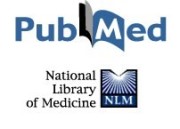 Stress peptide PACAP engages multiple signaling pathways within the carotid body to initiate excitatory responses in respiratory and sympathetic chemosensory afferents.
Stress peptide PACAP engages multiple signaling pathways within the carotid body to initiate excitatory responses in respiratory and sympathetic chemosensory afferents.
Source
Department of Physiology and Pharmacology, Hotchkiss Brain Institute, Faculty of Medicine, University of Calgary, Calgary, Alberta, Canada.
Abstract
Consistent with a critical role in respiratory and autonomic stress responses, the carotid bodies are strongly excited by pituitary adenylate cyclase-activating polypeptide (PACAP), a neuropeptide implicated in stress responses throughout the sympathetic nervous system. PACAP excites isolated carotid body glomus cells via activation of PAC1 receptors, with one study suggesting PAC1-induced excitation is due entirely to protein kinase A (PKA)-mediated inhibition of TASK channels. However, in other systems, PAC1 is known to be coupled to multiple intracellular signaling pathways, including PKA, phospholipase C (PLC), phospholipase D (PLD), and protein kinase C (PKC), that trigger multiple downstream effectors including increased Ca²⁺ mobilization, inhibition of various K⁺ channels, and activation of nonselective cation channels. This study tests if non-PKA/TASK channel signaling helps mediate the stimulatory effects of PACAP on the carotid body. Using an ex vivo arterially perfused rat carotid body preparation, we show that PACAP-38 stimulates carotid sinus nerve activity in a biphasic manner (peak response, falling to plateau). PKA blocker H-89 only reduced the plateau response (~41%), whereas the TASK-1-like K⁺ channel blocker/transient receptor potential vanilloid 1 channel agonist anandamide only inhibited the peak response (~48%), suggesting involvement of additional pathways. The PLD blocker CAY10594 significantly inhibited both peak and plateau responses. The PLC blocker U73122 decimated both peak and plateau responses. Brefeldin A, a blocker of Epac (cAMP-activated guanine exchange factor, reported to link Gs-coupled receptors with PLC/PLD), also reduced both phases of the response, as did blocking signaling downstream of PLC/PLD with the PKC inhibitors chelerythrine chloride and GF109203X. Suggesting the involvement of non-TASK ion channels in the effects of PACAP, the A-type K⁺ channel blocker 4-aminopyridine, and the putative transient receptor potential channel (TRPC)/T-type calcium channel blocker SKF96365 each significantly inhibited the peak and steady-state responses. These data suggest the stimulatory effect of PACAP-38 on carotid body sensory activity is mediated through multiple signaling pathways: the PLC-PKC pathways predominates, with TRPC and/or T-type channel activation and Kv channel inactivation; only partial involvement is attributable to PKA and PLD activation.
KEYWORDS:
PACAP, arterial chemoreceptor, carotid body, hypoxia, stress peptide
- PMID:
23594614
[PubMed – indexed for MEDLINE]
Publication Types, MeSH Terms, Substances, Grant Support
Publication Types
MeSH Terms
- Animals
- Arachidonic Acids/pharmacology
- Carotid Body/drug effects
- Carotid Body/physiology*
- Cyclic AMP-Dependent Protein Kinases/antagonists & inhibitors
- Cyclic AMP-Dependent Protein Kinases/drug effects
- Endocannabinoids/pharmacology
- Enzyme Inhibitors/pharmacology
- Estrenes/pharmacology
- Male
- Models, Animal
- Neurons, Afferent/drug effects
- Neurons, Afferent/physiology*
- Phosphodiesterase Inhibitors/pharmacology
- Pituitary Adenylate Cyclase-Activating Polypeptide/pharmacology
- Pituitary Adenylate Cyclase-Activating Polypeptide/physiology*
- Polyunsaturated Alkamides/pharmacology
- Potassium Channels, Tandem Pore Domain/drug effects
- Potassium Channels, Tandem Pore Domain/physiology
- Protein Kinase C/antagonists & inhibitors
- Protein Kinase C/drug effects
- Pyrrolidinones/pharmacology
- Rats
- Rats, Sprague-Dawley
- Respiratory Physiological Phenomena*/drug effects
- Signal Transduction/drug effects
- Signal Transduction/physiology*
- Stress, Physiological/physiology*
- Sympathetic Nervous System/drug effects
- Sympathetic Nervous System/physiology*
Substances
- Arachidonic Acids
- Endocannabinoids
- Enzyme Inhibitors
- Estrenes
- Phosphodiesterase Inhibitors
- Pituitary Adenylate Cyclase-Activating Polypeptide
- Polyunsaturated Alkamides
- Potassium Channels, Tandem Pore Domain
- Pyrrolidinones
- TASK protein, rat
- 1-(6-((3-methoxyestra-1,3,5(10)-trien-17-yl)amino)hexyl)-1H-pyrrole-2,5-dione
- anandamide
- Cyclic AMP-Dependent Protein Kinases
- Protein Kinase C
Grant Support
LinkOut – more resources
Full Text Sources
Other Literature Sources

